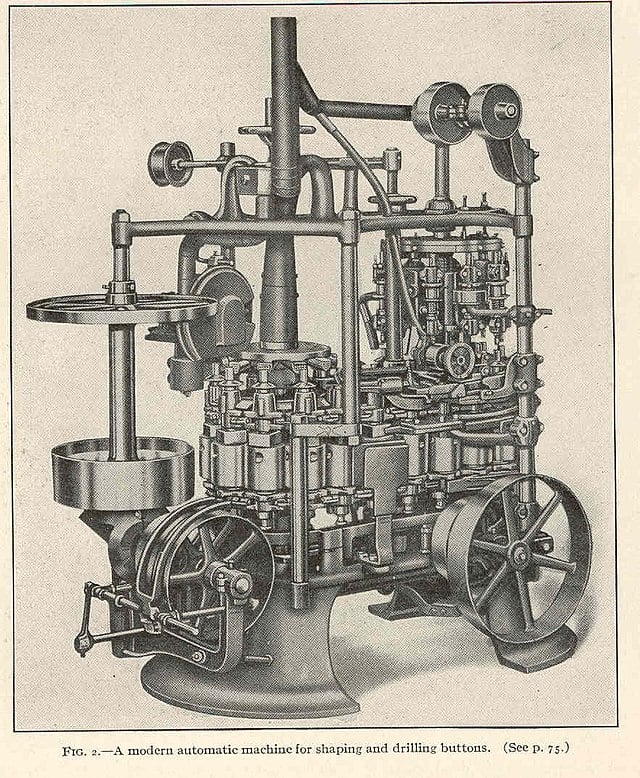When I was a kid I was really confused by Jerry. How could he make a home inside a wall like that? The walls are completely solid, with bricks and mortar. I had to move to Canada to understand that the walls are hollow and the house is made from wood, plaster, plastic and styrofoam.
Wall voids are extremely common in older brick buildings. In the case of my house and many others there’s an intentional void that is also used as a massive ac duct.
The 100 years old brick buildings don’t have any voids. That only started post-WWII when ventilation became a real concern.
But even then those houses are likely to have wooden floors and more modern drywall remodeling in some areas. My house is hurricane-proof but not rat-proof.
My house is brick, built in 1925 and has wall voids, you’re simply wrong.
It does have wood floors with 10" wide rough cut planking and has not been remodeled, that’s why I bought it.
Just as reference there are ancient Greek buildings with cavity walls, this argument is dumb.
I guess Greek house building was several decades ahead of Belgian house building then, because I’ve yet to see a pre-war house with cavity walls. I guess the cheap coal heating and lack of a need for cooling must have something to do with it.
Regional variations exist and in some places or fell out of habit completely, just not in the US and honestly most of the Americas.
and the house is made from wood, plaster, plastic and styrofoam.
I’m sorry, is this some kind of americas problem i am too european to understand?
Probably. American homes are typically made with lumber and foam insulation. Older homes (pre-WW2) will use lath and plaster for the interior walls, while newer (post WW2) will use drywall (gypsum board) sheets. There are two big reasons for the differences between American and European construction.
First, Europe had the luxury of time and existing infrastructure. When people were building homes hundreds of years ago, they already had trade routes in place for things like stone. When America was being settled and people were moving west, the only things settlers had was whatever they could fit on their wagons. They weren’t carting massive quantities of quarried stone across the wilderness. And that’s assuming they even had quarried stone in the first place; There aren’t very many quarries in America, even today, because America simply doesn’t have good stone. Rome basically sits on a massive slab of marble, which is why they used so much of it in their construction. But America (with a few exceptions, like the mountains) sits on sandy clay. So if stone is incorporated into American construction, it’s usually in the form of brick (made from the aforementioned sandy clay) instead of quarried stone. But again, nobody was going to waste a ton of wagon space (and an entire team of horses to pull said wagon) to cart fucking bricks across the country. They were more focused on things like survival, and stone+mortar didn’t make the cut.
Instead, the settlers carried tools, and then used those tools to build houses out of whatever resources were local to the area they settled in. This usually meant lumber construction, because carrying a saw and axe is much easier than carrying an entire tree. And as they moved into the more sparsely wooded areas, they changed their construction methods to match; The Great Plains used wire fences instead of solid lumber fences, because there wasn’t enough wood for solid fences. Wire was easy to carry in bulk spools, and you can make the posts out of small pieces of found lumber. When they realized cattle would push the wire fences over, they started adding barbs (literally just twists of more wire) to the wires. And that’s how barbed wire fences were invented, and became prolific throughout the area. Not because they were the best at fencing, but because they were good enough and were extremely resource-efficient for what the settlers had laying around.
The second reason is climate. It can be difficult to get Europeans to understand the sheer destructive force of American weather patterns. My buddy from the UK came to visit, and we had a thunder+hail storm while he was here. He was hunkered down below the table, worried that the windows were all about to shatter. Meanwhile, we were just watching TV like it was no big deal. The tornado sirens hadn’t gone off yet, and the hail was only the size of pennies, so we hadn’t even started to worry about it. To us, it was just a regular storm, but my buddy said it was the worst storm he had ever encountered… We had three more storms just like it during his two week stay. Lumber construction is surprisingly good at resisting high winds, shifting foundations (from the aforementioned clay soil), earthquakes, etc… Stone will tend to crumble, while lumber will bend and flex. The lumber house sounds like it’s falling apart, but that’s just the creaking and groaning from the joints. And that’s just in regular winds; If an actual tornado comes through, anything less than solid concrete will quickly fall apart. And even the concrete isn’t a for sure thing, as the tornado may just decide to pick the entire foundation slab up.
Great answer. I think it’s the easy answer to think “stone hard and solid therefore built better.” My house made out of “shitty” plaster and wood has stood for almost 80 years in an earthquake zone in southern CA. With proper periodic maintenance (which is relatively cheap compared to renovating a stone house) it could stand for another century.
Fires on the other hand might ruin all that though…
I wouldn’t consider using more technologically advanced and appropriate materials to be a “problem” I live on a fault line in wildfire country, I have zero interest in living in a stone or concrete house that will fall down and kill everyone, I want a quake rated home, which must be wood, and as far as wildfire, gypsum dryway is fire resistant and part of our fire code.
No one uses styrofoam but high tech high efficiency foam insulation does exist and works far better than stone, brick or concrete while also maintaining breathability
I want a quake rated home, which must be wood.
This isn’t true in Japan.
Probably;
Wood structures fair better in high wind and in earthquakes. Things we have far more of in North America.
Yeah, we also have a lot of wood. And wood structures are less labor intensive. Also, none of our buildings are over 300 years old, so we don’t need a lot of skilled stonemasons around to maintain them. And we’re further south than Europe, so cooling houses is a bigger concern than keeping them warm (though that reason is rapidly changing).
Insulation is way better than solid rock walls or whatever Europe uses.
You can insulate brick walls, too, you know?
Not in wildfires though which you have a shitton as well.
That’s another reason drywall is used, it’s pretty fire resistant. Where I live all exposed beams must be wrapped in drywall for fire safety
North America, maybe. Here in Brazil most houses are brick.
I was so confused too as a Brit since our houses are made of brick and mortar. I still find it weird that houses in NA are made out of wood and plasterboard/drywall
deleted by creator
We have earthquakes here. Plaster and bricks are great for insulating, but they crumble when the ground shakes.
Where did all your pipes and wiring go? What insulates the building?
You don’t need any of that nonsense. Real men insulate themselves with their feelings. As for electricity, I make that myself. They don’t call me the love dynamo for no reason.
Pipes are installed before the mortar (I think that’s the name), sometimes carving bricks. Wires pass inside flexible tubes (literally translated to conductors). This has the advantage that, if the tube is wide enough, we can pass more wires.
“Conduit” is the word for those tubes for wires. Probably a shared etymology with “conductor” though.
Having the pipes in the mortar/bricks sounds like a maintenance nightmare.
Ah, so it’s the same name in Portuguese. Conduítes.
The pipes go into the wall, older houses have them running outside the wall, right next to it, especially for stuff like radiator pipes. Wiring goes into the wall and gets plaster put over it. Saw a false ceiling in bathrooms too, since that had a lot of little lights so they probably ran it that way to keep it simpler. A lot of buildings just aren’t insulated, especially older ones, walls do an okayish job already. But newer buildings have styrofoam on the outside of the building. Makes em pretty much have the exact same temp year round, unless you open a window.
This. I live in a concrete building with insulation on the outside. In my area it does get moderately cold (down to -5 or -10°C). In the four years I have lived here, I used the heaters I think on 3 days total.
I mean, if you get winters that go to -20, you still have to heat it up during it. But most it goes down is like 15 degree C? Not comfortable, but you probably won’t freeze unless you don’t heat at all
With the -5 to -10°C we have over here it never got below 18°C indoors.
But I guess if we’d have -20°C outdoors for prologed periods we’d probably have to heat too. We do of course have heating, so that’s not a problem. I just wanted to demonstrate what our house can do.
I can’t say how exactly it would perform at -20°C, since we haven’t had that so far.
But on average our heating costs are ~€20 per year plus the €380 flat pricing that the mandatory provider that we have to use charges independent of usage. Sadly I can’t cancel that provider since they come with the rent contract. Otherwise I would have cancelled the heating a long time ago and instead used our reversible AC to heat instead.
Yeah… I didn’t get homes elsewhere having ventilation until I realized that it’s too cold in a lot of places to just open the window (at least I think that’s why vents exist, if not, please enlighten me)
A beautiful entrance like that! In this economy?
Of course, the economy, thanks mate!
i have done some renovations and yet to find a tiny living room set with tv in my walls, boomer mice had it easy back then
I mean clearly

Obama passed radical leftist neo-marxist regulations designed to constrict the size of mice holes all over not only the United States Of America but also the Not Yet Incorporated States/Colonies Of America’s World and strip the freedom that makes this country great slowly from her heart!
I mean come on, what do you think Greta Thunberg has actually been doing all this time?
If you like this post please join my Facebook News Group Called “Stop Greta From Shrinking Our Miceholes!”
Sources:
Jordan PeePee of the Small PeePee Institute Of Canadamerica PSD with Bachelors In Talking To Women (incomplete) with a Minor in Whiny Men (GPA in Minor 4.0)
edit USD not PSD my bad
Thanks, Obama
You are welcome mom
deleted by creator
Hey thanks I added you to the Facebook News Group, my posts will now show up at the top of your grandpa’s feed because we mapped out your family with basic cookie/search history records (in a totally anonymous fashion, trust us it is math) and now your grandpa will start to slowly descend into angry conspiracy theories with custom tailored content designed on Family Manipulation Algorithms (FMAs for short).
Keep up the good work!
I am chaos, see my clown makeup strewn across The Big Angry Dorito Of Hate, hear my warning (your grandpa can’t lol), IF YOU DO NOT DIP ME IN THE COOL RANCH OF JUSTICE WE SHALL PERISH
Depressingly acurate.
holds up spork!!1!
Changes in construction standards to increase hole ownership has lead mice to cut corners to increase holes and maintain profits from hole renters.
We have to consider the hole lords bottom line.
They dont even put the little mail boxes on the side.
Jerry is that you
The unions fell apart
Wood products have changed and mice don’t like the glue from the pressed baseboards.
The Tom & Jerry accords of 1959. "All door shaped holes will henceforth be circular "
A new breed of supercats figured out how to condense themselves enough so that they could fit in those holes. It was a sad day for mice everywhere.
deleted by creator
When was the last time you saw a house with wainscoting made of wood…
Every day at home.
- looks around * …… now
That’s an interesting word, isn’t it? Wainscotting… Wainscotting… Wainscotting… Sounds like a little Dorset village, doesn’t it? Wainscotting.
We’ve been mentioned on telly!
Wainscoting. Sounds like… a little Dorset village. Wainscoting.
You should check it for killer sheep holes














